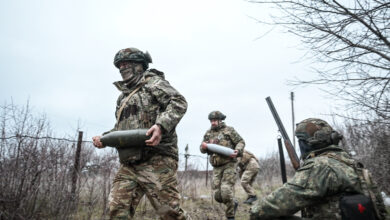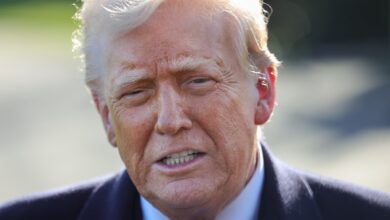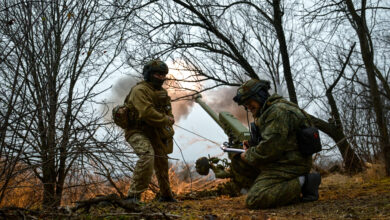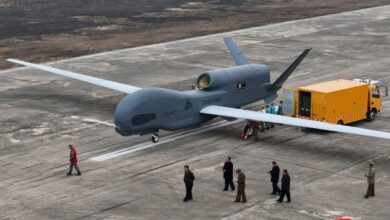
Much of the punditry on what can now be called the “Second Karabakh War” has focused on a curious apparent absentee.
Moscow has, surprisingly, been relatively silent on this burning issue in its immediate neighborhood. Beyond a few formal expressions of concern, including at the reported presence of Syrian mercenaries in the region, Russia has so far refrained from the kind of forceful diplomacy one would have expected in previous years when its writ over the South Caucasus was unchallenged.
Instead, most of its activity has been low-key, limited to phone contacts with the parties directly involved, Ankara, and other key players, both within the Minsk Group and outside.
Russia’s Influence in the Caucasus
Some have pointed to this as the continuation of a long-term trend: Russia’s influence over the region has been, ever so gradually, diminishing since the fall of the Soviet Union.
It no longer has military bases in either Georgia or Azerbaijan (except through its forced military presence in Abkhazia and South Ossetia), and only Armenia has signed up to its various integration projects in the former Soviet space: the Eurasian Economic Union and the CSTO Alliance, among others.
Moscow was fast in its diplomatic interventions during the previous major upsurge in fighting in April 2016. This time, however, it is biding its time through what appears to be low-intensity diplomacy and a carefully balanced — some would say hesitant — approach that starkly contrasts Turkey’s full-throated support to the Azerbaijani side.
Pressure on the Kremlin
In addition, Russia has much on its plate. It is still supporting a proxy war in Eastern Ukraine; it has since 2015 been directly engaged in a costly intervention in Syria; and Belarus’ post-election pro-democracy protests have put it before a difficult choice between managing regime change or doubling down on its support for an unpopular dictator in a country it sees as crucial to its security (and, in certain ways, its identity).
Given these pressures, it would not be inconceivable that Russia is now less prepared to compellingly intervene in a region where it has diminished levers at its disposal in light of yet another challenge.
After nine days of fighting, Azerbaijan appears to be gaining momentum with repeated aerial bombardments, says @JonahFisherBBC
The country still hasn't responded to calls for a ceasefire
https://t.co/3ML4CAoRI1 pic.twitter.com/zx3NNgfghN
— BBC World Service (@bbcworldservice) October 6, 2020
However, one would have to be careful not to hastily read the Kremlin’s lack of public reaction as an indication that it has given up on this region; after all, the South Caucasus, which it has consistently seen as part of its “sphere of special interest” since the fall of the USSR, remains crucial to its soft underbelly to the north.
Several factors have to be considered before one comes to such a conclusion. For one, Russia’s formal alliance with Armenia makes this a test case for its commitments within the former Soviet space. Additionally, Moscow is unlikely to accept a permanent Turkish military presence in the region, unless it were somehow coordinated with itself.
Russia has shown itself quite sensitive to such past foreign forays into other parts of the post-Soviet space. The reported presence of Syrian mercenaries also acts as a potential red flag in view of Moscow’s sensitivities in the nearby North Caucasus.
Divide and Rule
Moreover, Russia’s balanced, cautious approach is nothing new. The country has always engaged in what has been referred to as “pivotal deterrence” between Armenia and Azerbaijan, despite its formal alliance with the former.

Moscow’s goal, up to this point, was to maintain the delicate balance between Baku and Yerevan by rationing its support to either side. This enabled Russia to prevent the conflict from escalating beyond its control, while also keeping it unresolved: a crucial element in its “divide and rule” attempts to keep Armenia locked in an alliance and prevent trilateral co-operation between the region’s internationally recognized states.
Turkish support has now disrupted this long-term regional strategy. Combined with the linkages this creates with other theaters where Ankara and Moscow stand in opposition (Syria, Libya), these new elements preclude reliance on old, trusted templates.
Moscow’s True Intentions
Vladimir Putin’s Russia also has a general tendency to bide its time and hold its cards close to the chest. Its invasion of the Crimea in 2014 and hybrid military intervention into Eastern Ukraine happened without much-preceding fanfare, as did the sudden appearance of Russian troops in Syria in 2015 when many had assumed the Kremlin had given up on their man in Damascus.
There also tends to be a considerable gulf between public statements and actions on the ground: any involvement is kept plausibly deniable. Things are often not what they seem. Even during the 1991-94 war – when Russia is known to have supported Armenia – its public support was, at best, equivocal.
With developments on the ground still in flux, it might take some time before Moscow’s true intentions become known. In any case, counting it out just yet would appear premature.
Turkey’s presence adds a new and potentially very dangerous twist to the situation. The question may not so much be whether Russia is “still there,” but whether, faced with potential escalation, Ankara and the Kremlin will again be able to call on the kind of pragmatism previously displayed in Syria.
 Kevork Oskanian (@DrKevorkO) is a Honorary Research Fellow at the University of Birmingham’s Department of Political Science and International Studies (POLSIS).
Kevork Oskanian (@DrKevorkO) is a Honorary Research Fellow at the University of Birmingham’s Department of Political Science and International Studies (POLSIS).
Disclaimer: The views and opinions expressed here are those of the author and do not necessarily reflect the editorial position of The Defense Post.
The Defense Post aims to publish a wide range of high-quality opinion and analysis from a diverse array of people – do you want to send us yours? Click here to submit an op-ed.











